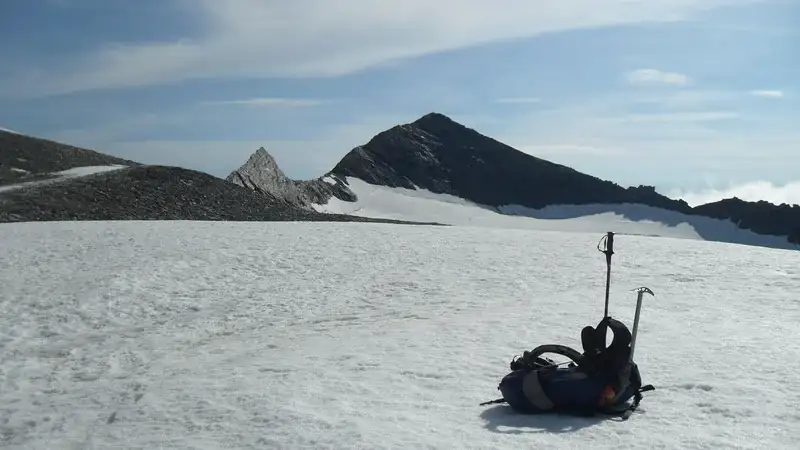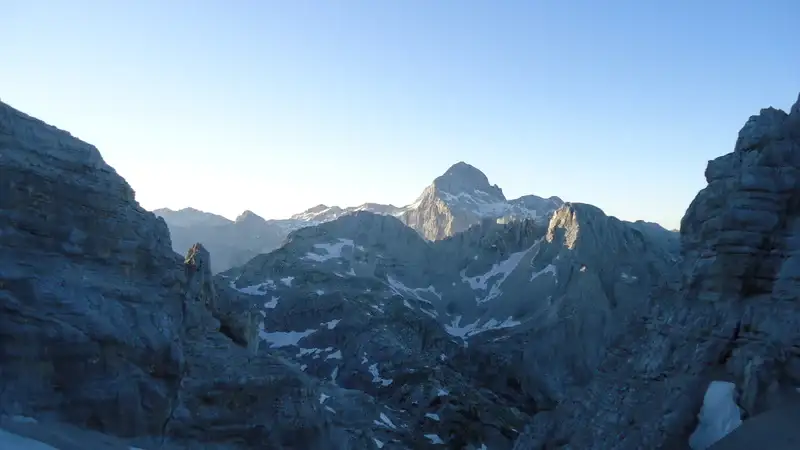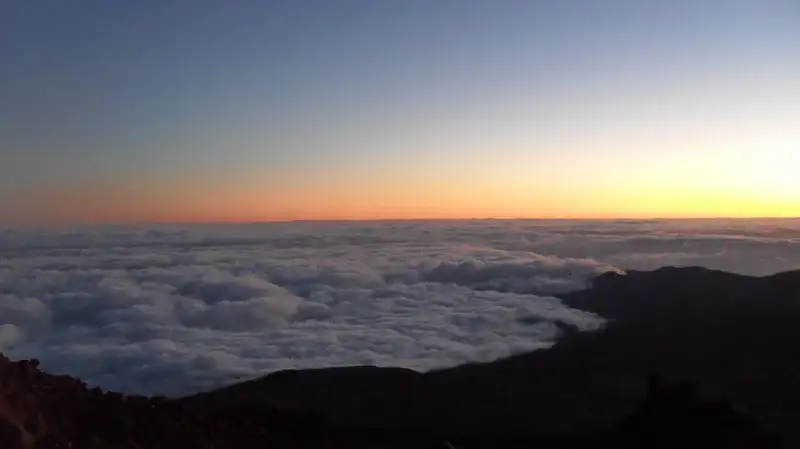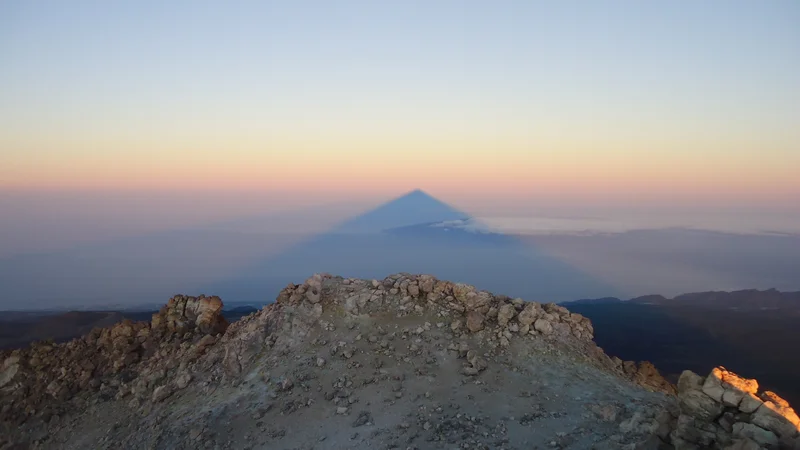I have been mountaineering for decades in the same manner, and did not even know that there was a name for such a style. Well, it turns out that there is.
The term alpine start describes starting very early, sometimes shortly after midnight, or quite generally well before sunrise. Ideally, you would want to get to the summit to watch the sunrise. Some of the reasons for such an approach are to avoid possible weather worsening during the day, and to climb when snow on glaciers is still firm and hard.

Why doing an alpine start?
Weather situation in the mountains is usually the most stable in the morning, and it can change to worse during the day.
This is why it is best to start early and get to the summit and off the summit before the weather changes. You would not want to be there when there is a chance for lightning.
The top picture above is from my climb of Jalovec. It shows how it was after several hours of walking in the dark. In that case, I started at 3:50 a.m. from a nearby pass which was with a car access. This means I got up around 2 in the morning as I had to drive a long way to the pas.
Also, snow on higher mountains can become soft and dangerous during the day. So if you know you will be passing a glacier, it is best to do this early. Otherwise, risk of ending in a crevasse is real.
I have experienced this on my unfinished tour to Monte Leone. When I climbed to the high plateau shown in the picture below, I realized that the snow was completely soft.
So, being solo and without any people on the mountain, with the route that was going over the glacier in the picture with many hidden crevasses, I had to give up. And I can tell you, I started at 3:30 am from Simplon Pass, but it was still not early enough.

Sometimes, a conveniently positioned mountain hut can save you from starting too early. The picture below is from my climb of Razor in the Slovenian Alps. I did start early but not as early as usual, the hut was at a very high elevation under the summit.

But I have climbed a number of mountains overnight, and this means without sleeping at all. This was so several times on El Teide Tenerife, on Mt Fuji in Japan, and also on Weissmies in Swiss Alps. I guess this could be described as an extreme version of alpine start.
So the reasons for alpine start are more or less the following (there may be more):
- To avoid stormy weather that usually comes later during the day.
- To cross glaciers while the snow is still hard.
- This is also a way to minimize chances for rock falls.
- Purely esthetic, to enjoy sunrise from the summit.
- To avoid crowd.
In this video you can see what its author thinks about alpine start:


Disadvantages of an alpine start
Actually there are quite a few.
- If you are alone and do not know the terrain, frankly speaking, you should avoid early starts. It can be difficult to find the route and you can spend lots of time trying to find your way. Trust me, I am talking from my own bad experience.
- It may be very cold and unpleasant. You will be very happy when the sun rises.
- It may also be scary. You might hear noises of animals and you do not know what this is, you will also see their eyes reflecting the light of your head torch, so imagination works…
- You will be sleepy and you may not be focused enough. This may result in injuries.
- You can even be stopped by police. This happened to me as I was driving trying to find the road to Teide plateau from Puerto de la Cruz. They noticed me and decided to check. It was all fine in the end, but it could have ruined my plans.
Note that the term alpine start should not be mixed with the terms like alpine approach or alpine style.
What does alpine approach mean? What is alpine style?
On Wikipedia, you will see the statement that alpine style means climbing and mountaineering in a self-sufficient or self-supporting manner. This style also implies fewer people involved.
From what I know, it was Messner who introduced his alpine style to Himalayas. I have seen him in a video talking about this as the only option as he could not afford all that supporting stuff and people. But some write that this style was introduced there by Chris Bonnington.
This alpine approach or alpine style is supposed to be different from expedition style of mountaineering with many supporting members, porters, vehicles, base camps established well in advance, etc.
A typical example of the expedition style was the Hillary and Tenzing climb of Everest. The total number of people was several hundreds, with two separate climbing teams, a British Army Colonel as the commander in chief, etc.
I have seen some writing about late Ueli Steck as an example of an alpine style mountaineer in Himalayas. But on the other hand, as far as I know, he was relying heavily on his support team, porters and basecamps.
Conclusion
So I hope that I was able to describe the meaning of the term alpine start. Most of my climbs were of that type, there are just a few mountains I climbed by starting later during the day.
Typically, when I start early, on my way back from the summit I meet many people going up. So if you want to avoid crowd on the summit, this is a way, so go early.
Please have a look also at my another text about hiking at night. Thank you for reading. There is a comment box below if you have questions or comments. Have a nice day.
Leave a Reply